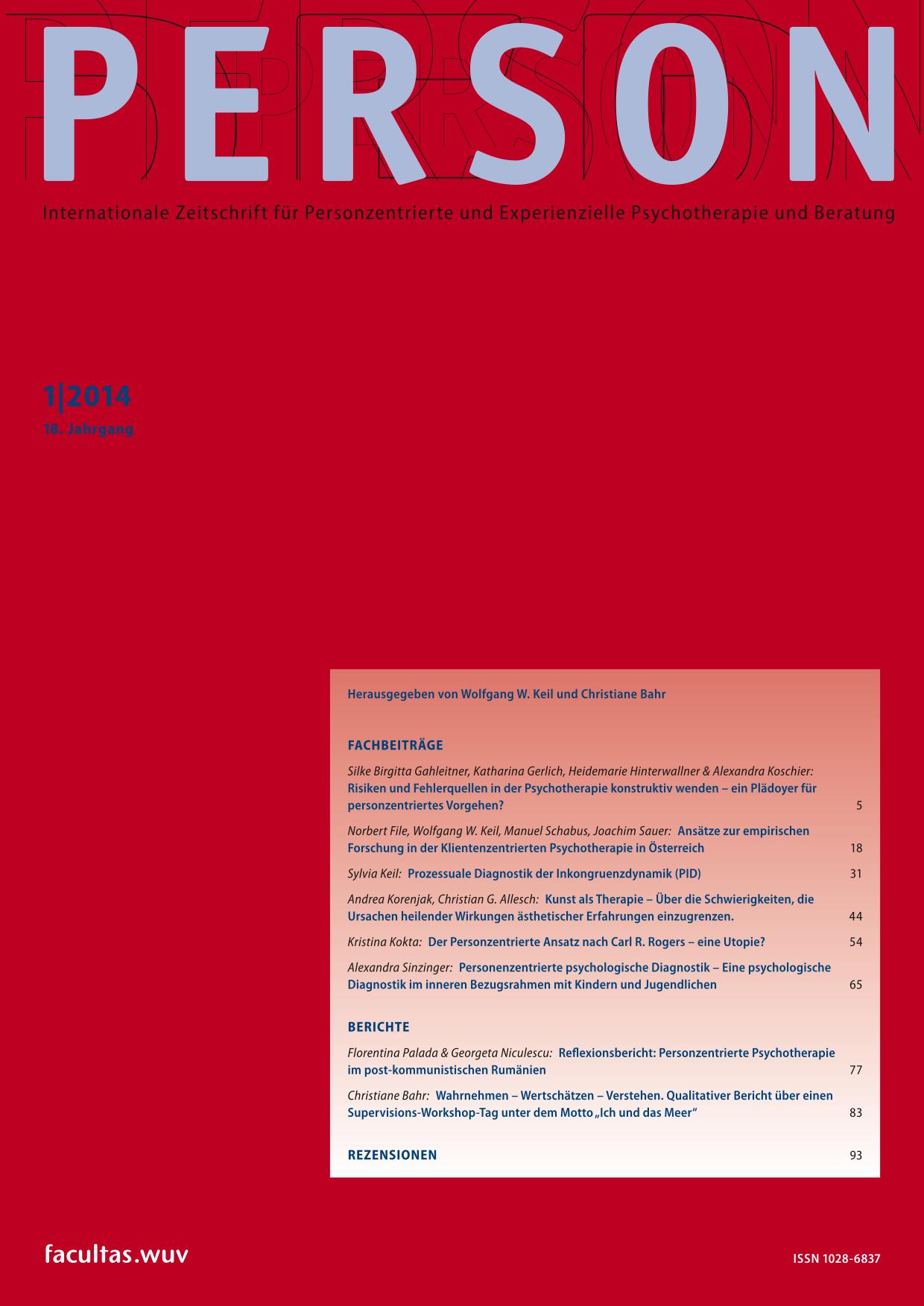Prozessuale Diagnostik der Inkongruenzdynamik (PID)
Main Article Content
Article Sidebar
Abstract
Processual Diagnostic of Incongruence-Dynamics (PID). This paper presents a process-related diagnostic-model for identifying incongruence, which facilitates the systematic classification of hypotheses derived from empathic understanding during therapy according to the incongruence-concept. Incongruence is defined as a dynamic process. The progress of therapy corresponds to an increase of empathy and, therefore, process-related diagnoses of incongruence-dynamics represent fixed points in difficult and complex therapy procedures. Diagnoses of incongruence-dynamics can be developed hermeneutic-empathically from the therapeutic response and from patients’ symptoms, behaviors, narratives and self-narratives. They form the basis for the creation of intervention-strategies which bring the process forward and help stabilize the self-concept. The specific and individual therapy-process can be described in chronological order by process-related diagnoses of incongruence; this also opens up new opportunities for meta-empathic understanding based on the progress of the process itself.
How to Cite
Downloads
Article Details
incongruence, self-concept, hermeneutic empathy, diagnostic, diagnosis

